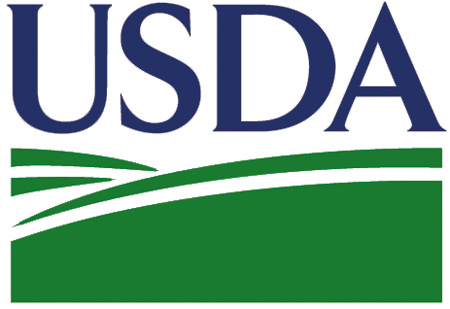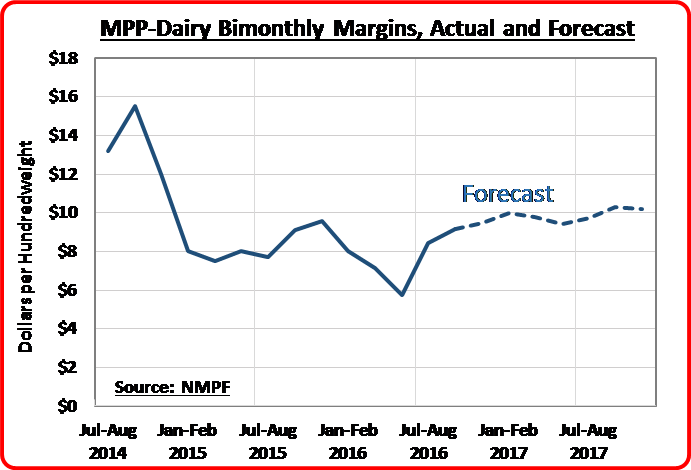 The U.S. Department of Agriculture’s National Agricultural Statistics Service (NASS) is in the process of conducting its Agricultural Resource Management Survey (ARMS) for dairy farms, also known as the Dairy Cost of Production Survey. NMPF makes extensive use of this information and strongly encourages dairy producers to participate if called upon to do so. Specifically, NMPF will be using USDA cost of production data as it works with the new Congress to make improvements in the Margin Protection Program.
The U.S. Department of Agriculture’s National Agricultural Statistics Service (NASS) is in the process of conducting its Agricultural Resource Management Survey (ARMS) for dairy farms, also known as the Dairy Cost of Production Survey. NMPF makes extensive use of this information and strongly encourages dairy producers to participate if called upon to do so. Specifically, NMPF will be using USDA cost of production data as it works with the new Congress to make improvements in the Margin Protection Program.
The ARMS survey provides updated information about the financial well-being, costs of production and production practices of the U.S. dairy sector. In addition to providing solid data for USDA research on dairy production, the ARMS survey information is used to build accurate baseline information for the USDA monthly and annual reports on the cost of milk production. The ARMS surveys examine selected commodities on a rotating basis. This year, it is collecting data for corn and milk production, including the organic dairy sector. Dairy production is surveyed every five years.
Last summer, USDA screened and selected a sample of 3,269 dairy producers in 28 states for the survey. The survey will be administered by trained field enumerators who will schedule appointments from December 2016 through April 2017 with the individual dairy operators in the sample. The higher the participation in this year’s dairy ARMS survey, the better the quality of the information available to the industry. If you have any questions about participating, please contact Peter Vitaliano.



 To maintain and grow those sales, U.S. dairy farmers and processors need a level international playing field to compete, the letter to Trump noted. Additionally, NMPF and USDEC noted their agreement with President-elect Trump that current trade agreements must be strictly enforced. Protectionist policies that run contrary to established agreements, such as the Canadian dairy pricing schemes and the European abuse of geographical indications, must be immediately addressed and reversed. NMPF and USDEC also listed other key factors to help preserve overseas dairy sales, including a focus on how U.S. regulatory agencies should do more to resolve technical trade barriers to exports.
To maintain and grow those sales, U.S. dairy farmers and processors need a level international playing field to compete, the letter to Trump noted. Additionally, NMPF and USDEC noted their agreement with President-elect Trump that current trade agreements must be strictly enforced. Protectionist policies that run contrary to established agreements, such as the Canadian dairy pricing schemes and the European abuse of geographical indications, must be immediately addressed and reversed. NMPF and USDEC also listed other key factors to help preserve overseas dairy sales, including a focus on how U.S. regulatory agencies should do more to resolve technical trade barriers to exports. ARLINGTON, VA – The National Milk Producers Federation (NMPF) and the U.S. Dairy Export Council (USDEC)
ARLINGTON, VA – The National Milk Producers Federation (NMPF) and the U.S. Dairy Export Council (USDEC) 
 The first annual FARM Program Evaluator Conference, held after NMPF’s annual meeting earlier this month, drew strong turnout from more than 60 evaluators representing the majority of companies participating in the National Dairy FARM Program.
The first annual FARM Program Evaluator Conference, held after NMPF’s annual meeting earlier this month, drew strong turnout from more than 60 evaluators representing the majority of companies participating in the National Dairy FARM Program. Efforts by the Food and Drug Admiration to advocate a one-third reduction of the sodium content of cheese drew strong opposition last month from NMPF.
Efforts by the Food and Drug Admiration to advocate a one-third reduction of the sodium content of cheese drew strong opposition last month from NMPF.  The Environmental Protection Agency (EPA) pursued a highly-politicized approach to implementing its controversial Waters of the U.S. regulation updating the Clean Water Act, according to a congressional report issued last month. That report, coupled with the anticipated change in management of the EPA under the new Trump Administration, is likely to result in the demise of the highly-contested WOTUS rule.
The Environmental Protection Agency (EPA) pursued a highly-politicized approach to implementing its controversial Waters of the U.S. regulation updating the Clean Water Act, according to a congressional report issued last month. That report, coupled with the anticipated change in management of the EPA under the new Trump Administration, is likely to result in the demise of the highly-contested WOTUS rule.



